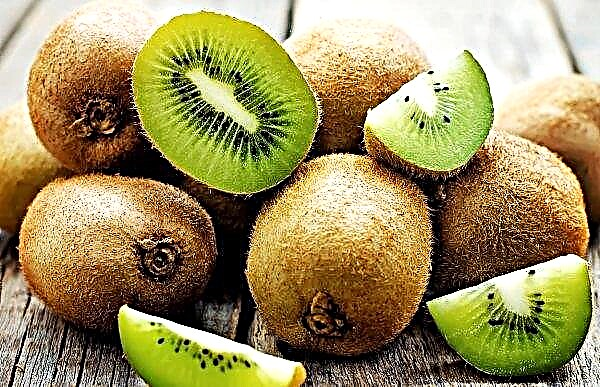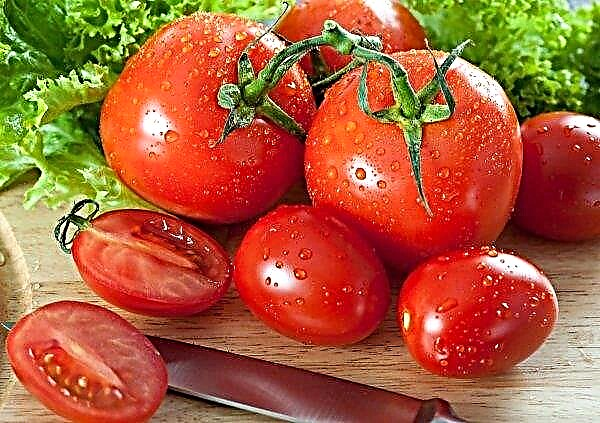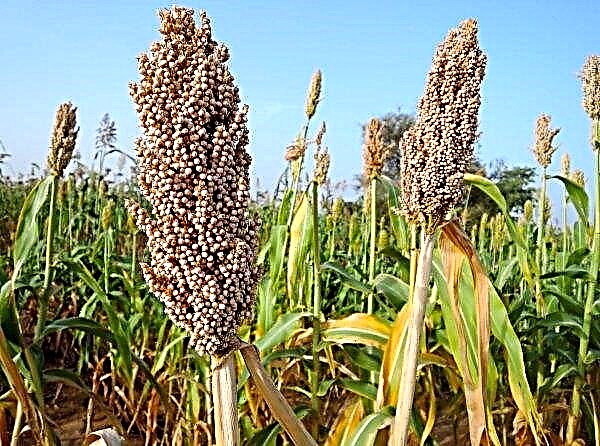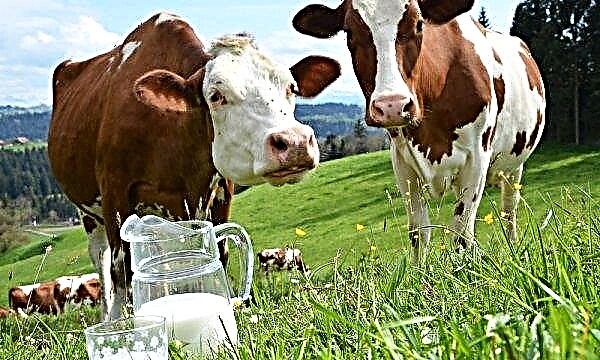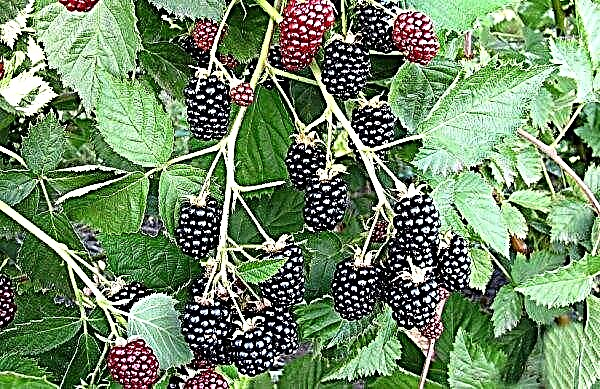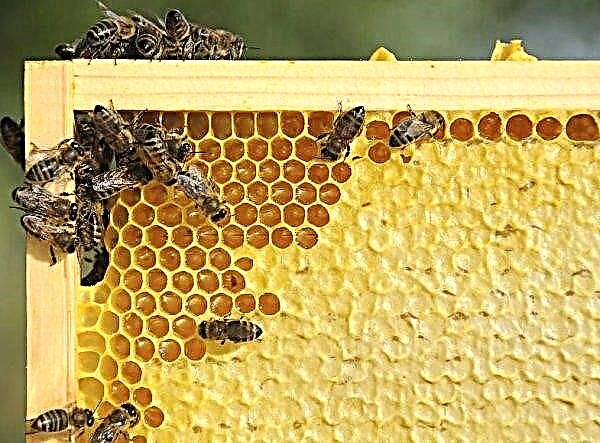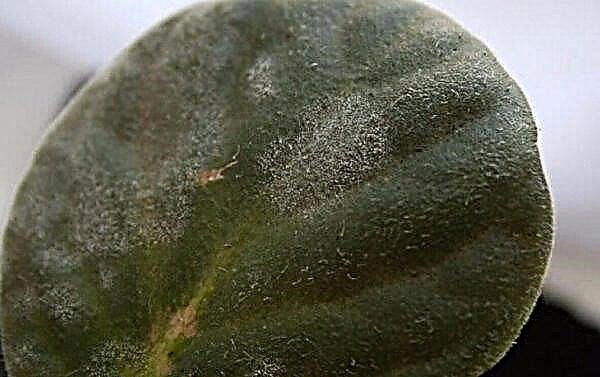Early ripe varieties of melons are suitable for cultivation in almost all regions, since juicy fruits have time to ripen even in a short warm season. One of the promising is the hybrid Fairy Tale F1. Read more about this gourd culture below.
Variety breeding history
Melon Fairy Tale F1 was launched around 1995 in Russia. In 2001, after testing, this variety was listed in the State Register of Russia.
Did you know? The most delicious and juicy variety of Yubari King melons is grown in Japan. You can buy such fruits only at auctions, and their cost reaches $20 thousand for 2 pcs.
The hybrid under consideration is an analogue of the Kolkhoznitsa variety. Distributed in the southern regions and the central zone. Using the seedling method of growing seeds, it can be cultivated in the northern latitudes.
Botanical Description and Characterization
Unlike many similar cultures, the Tale melon is characterized by amicable ripening and return of fruits. It adapts well to various climatic conditions. Melon is an annual herbaceous crop. Bushes are compact, medium-braided, well tolerate formation. If desired, they can be grown on trellises. Creeping shoots, round-faced, equipped with antennae.

The leaves are large, palmate-lobed, sitting on powerful, long petioles. The pubescence of leaves and shoots is weak. The flowers are large, yellow in color, on one plant both male and female forms are formed. The culture is characterized by high resistance to peronosporosis and mildew. Very rarely attacked by pests. The hybrid is also immune to nighttime temperature fluctuations.
Appearance of the fetus
Melons of the Fairy Tale variety are elliptical in shape. Their surface is smooth, bright yellow, without a pattern, less often - with a thin, barely noticeable mesh at the stalk. The weight of the fruit varies between 1.6–2 kg.
Taste qualities
The melon pulp of this variety is cream-colored, crispy and dense. In addition, it is juicy and very sweet in taste.
The nutritional value
Energy value 100 g of raw melon pulp Fairy tale F1 - 35 kcal.
This amount of fruit contains:
- protein - 0.6 g;
- fats - 0.3;
- carbohydrates (mono- and disaccharides, fructose, glucose, sucrose, starch) - 7.4 g;
- saturated acids - 0.1;
- irreplaceable acids (Omega-3, Omega-6) - 0.059 g;
- dietary fiber - 0.9;
- water - 90 g;
- ash - 0.6 g.
Did you know? From the point of view of botany, melon is a fruit with a pumpkin fruit, but merchandising positions it as a dessert vegetable.
The composition of melon pulp also includes a large set of micro and macro elements:
- vanadium;
- aluminum;
- boron;
- iron;
- iodine;
- cobalt;
- molybdenum;
- lithium;
- rubidium;
- manganese;
- selenium;
- strontium;
- calcium;
- phosphorus;
- silicon;
- potassium;
- magnesium;
- sulfur;
- chlorine.
In addition to minerals, melon flesh includes many different vitamins. Their harmonious combination allows you to optimize the absorption of micro and macro elements by the body, which helps to improve overall health.
Their harmonious combination allows you to optimize the absorption of micro and macro elements by the body, which helps to improve overall health.
From vitamins, melon includes:
- thiamine;
- riboflavin;
- pantothenic acid;
- niacin;
- folates;
- pyridoxine;
- vitamin C;
- retinol;
- beta carotene;
- alpha tocopherol;
- phylloquinone.
Timing of flowering and ripening
Flowers on a plant appear 30–40 days after the onset of seedlings. First, male forms are formed, then - female ones. Fruits ripen in 58–62 days.

Agrotechnics growing melons from seedlings
By direct sowing, the Tale melon is advisable to grow only in the southern regions. In temperate and northern climates, only seedlings are used. It is relevant for the southern regions. With the seedling method of cultivation, plants enter the fruiting phase faster.
Growing Features
The site for melons must be selected well-lit by the sun and protected from the wind. With a lack of light, the fruits will develop poorly and cannot accumulate enough sugar. The sowing period is determined in accordance with weather conditions. When planting seedlings in open ground, the ambient temperature should be at least +10 ... + 15 ° C.
Did you know? The weight of the largest melon was 200 kg. Such a fruit was able to grow an Austrian farmer in 2009.
The soil is being prepared in the fall. It should be loose, well fertilized. First, the site is cleared of residual vegetation. Then, cultivation is carried out to a depth of 20 cm and disinfected with a 3% solution of copper sulfate.
A week later, under digging to a depth of 20 cm, make for each square meter:
- 20 kg of fresh manure;
- 10 kg of compost.

Preparing for planting seeds
Before sowing, the melon seeds are soaked for 2 hours in the Epine growth accelerator. For 100 ml add 1-2 drops of the substance.
The soil for seedlings is prepared by mixing in equal proportions:
- compost;
- sand;
- garden soil;
- peat.
To disinfect and enrich the soil with potassium-phosphorus elements, wood ash is added to the composition of the soil mixture - 20% of the total soil mass. Soil moisture should be between 50-60%. Its structure should be quite loose - this will increase the rate of germination of planting material.
Initially, seedlings are grown in oblong containers or crates. A distance of 10 cm is left between the seeds, 12 cm in rows. The sowing depth should be no more than 1 cm.  It is best to simply spread the seeds on the surface of the soil, and then sprinkle with a layer of sand mixed with peat. After sowing, the surface of the container is covered with glass or polyethylene. This will create the necessary conditions for germination.
It is best to simply spread the seeds on the surface of the soil, and then sprinkle with a layer of sand mixed with peat. After sowing, the surface of the container is covered with glass or polyethylene. This will create the necessary conditions for germination.
The container should be rearranged in a warm place. The optimum temperature for seed germination is +23 ... + 27 ° C. Lighting at this stage of the growing season has no role. The main thing is to remove the shelter daily for 20 minutes before germination and, if necessary, spray the soil with room temperature water from the spray gun.
Growing and caring for seedlings
From the time of sowing to the appearance of seedlings, an average of 7-10 days passes. As soon as sprouts appear from the soil, the container must be freed from shelter and rearranged on a well-lit window sill. During the growing of seedlings, the light regime is important. The optimal daylight hours for melon seedlings is 12 hours. The air temperature in this period begins to gradually decrease, bringing it to + 15 ° C.

Watering seedlings is carried out on demand, when the soil dries to a depth of 1 cm. This can easily be checked with a wooden stick or match. If dirt remains on it after immersion in the ground, then watering is not needed. It is better to moisten the soil with a spray gun.
After 14 days from the appearance of the sprouts, you can add a few drops of Epina to the irrigation liquid (1-2 drops / 100 ml of water). When 3 real leaves open on the plant, you need to pick in separate containers. Self-decomposing peat pots are best used. This will reduce the complexity of the work during the final transplant into the open ground and reduce the risk of trauma to the roots of the plant.
Important! When watering melons, you need to ensure that water does not get into the axils of the leaves.
After transplantation, after 10 days, plants can be fed “Epin” once again. About a week before planting, seedlings need to begin to be exposed for several hours a day in the open air. This process is called hardening. It is necessary to increase the adaptive abilities of plants. Every day, the interval of stay on the street should be increased, gradually bringing it to 24 hours.
Landing
The day before transplanting seedlings to an open area, the soil must be leveled, and 2 hours before transplanting, make indentations 2 cm larger in diameter and height than the containers in which the seedlings are located. In each hole you need to put 1 tbsp. l wood ash and move the plants into pits along with pots. The distance between the bushes should be left 70 cm, between the rows - 150 cm.

Care Features
One of the advantages of this culture is its unpretentiousness in care. After transplantation, watering is carried out after 5 days. Water is poured into the aisles or a drip irrigation system is built on the site. The multiplicity of water procedures - 1 time per week until the start of fruit ripening.
At first, it is necessary to loosen the soil and remove weeds, otherwise melons will not be able to develop normally. So that the vegetation, and later the fruits, do not come into contact with the soil, the aisles must be mulched with hay or straw after watering and loosening.
Bushes of this variety also need nipping. Each plant should leave 3-4 powerful shoots: 1-2 main and additional. Trimming is carried out first on the 5th sheet, then on the 7th. You should also regulate the number of ovaries - leave no more than 4-5 fruits on the bush. After nipping, the slices must be treated with crushed activated carbon or wood ash
Fertilizers for melons during the growing season are not needed. All nutrients are introduced at the stages of soil preparation in the fall, spring and when planting.
Harvesting and Storage
Harvesting fruits is best done in the morning, before the heat. Harvesting of the Fairy Tale variety occurs around mid-July.
The degree of fruit maturity is determined by several criteria:
- skin color - it should be yellow, and if you need to transport the crop, then greenish;
- smell - pleasant, sweet honey;
- detachability from the stalk - the pumpkin is easily removed from it;
- sound when tapping - it should be deaf, voiced speaks of immaturity.

It is better to remove the fruits from the bushes together with the stalks if you need to transport melons, or without them, if the products will be consumed or processed in a short time. In a cool, dark room, at a temperature of +6 to + 10 ° C and a relative humidity of 65%, pumpkins retain their nutritional value for about 10 days. At room temperature, fruits can be stored for no longer than 3 days.
Melon variety Fairy Tale F1 is perfect for cultivation in any region due to its resistance to temperature changes, as well as diseases and melons pests. The preferred method of growing is through seedlings.


